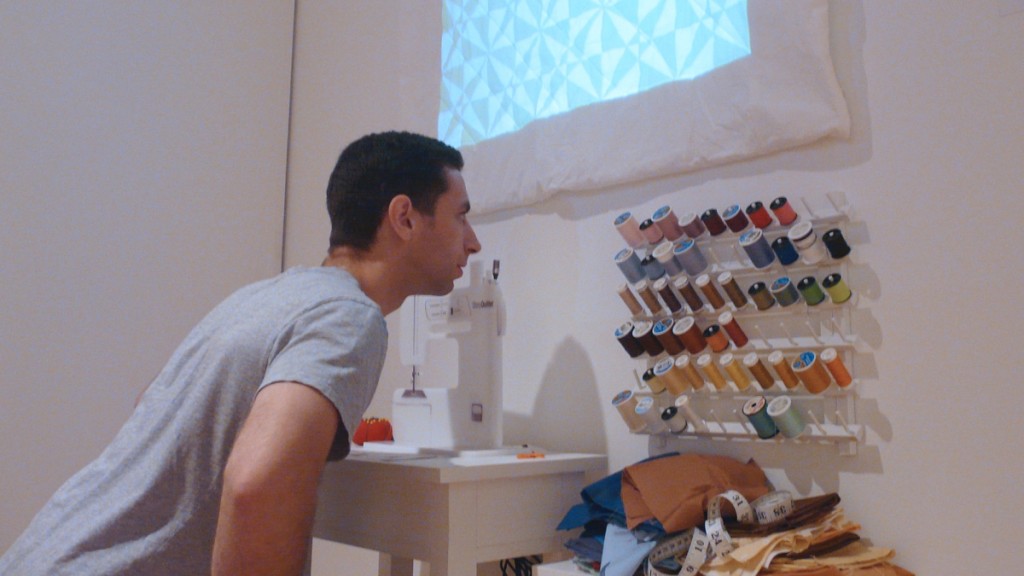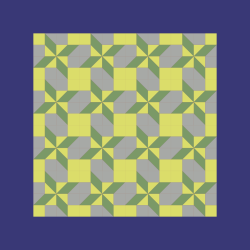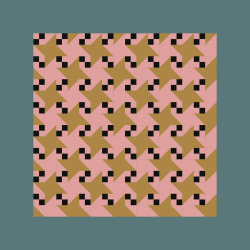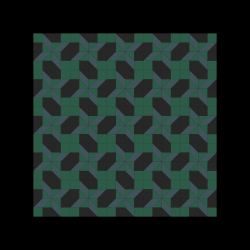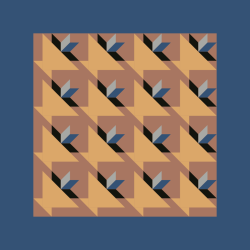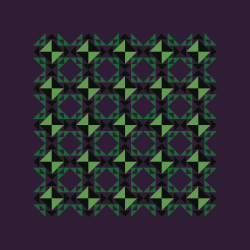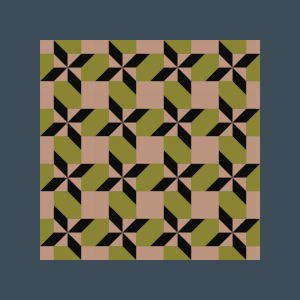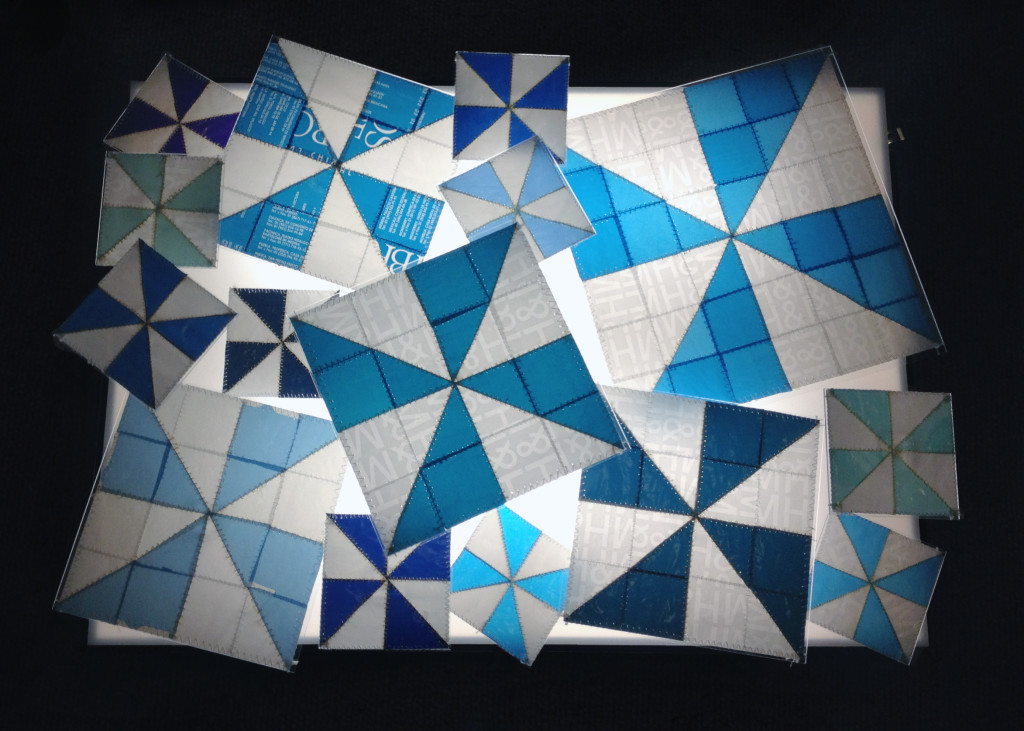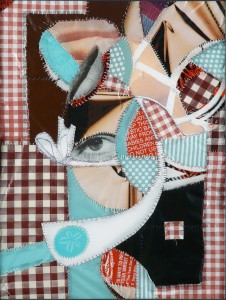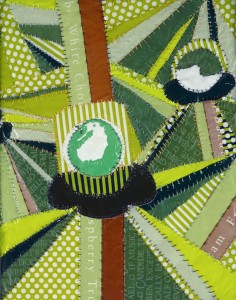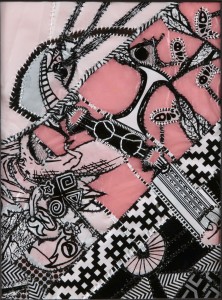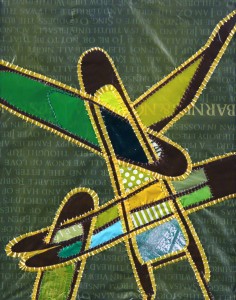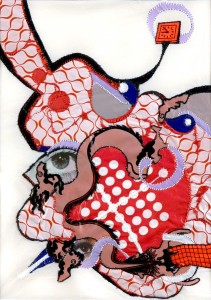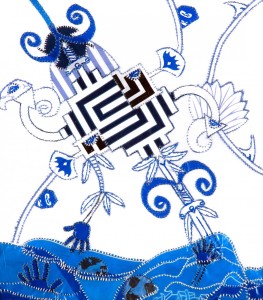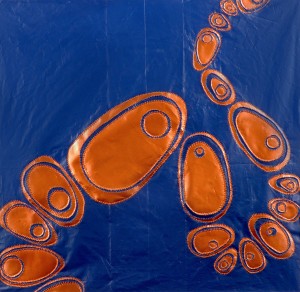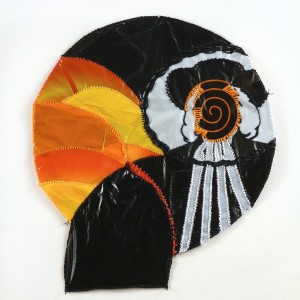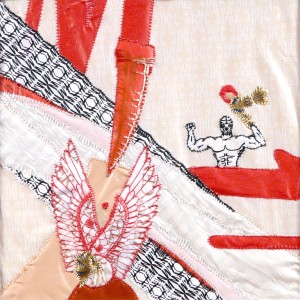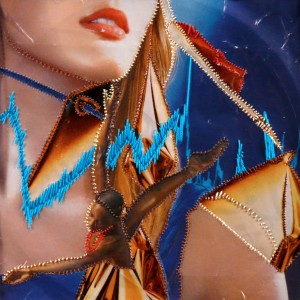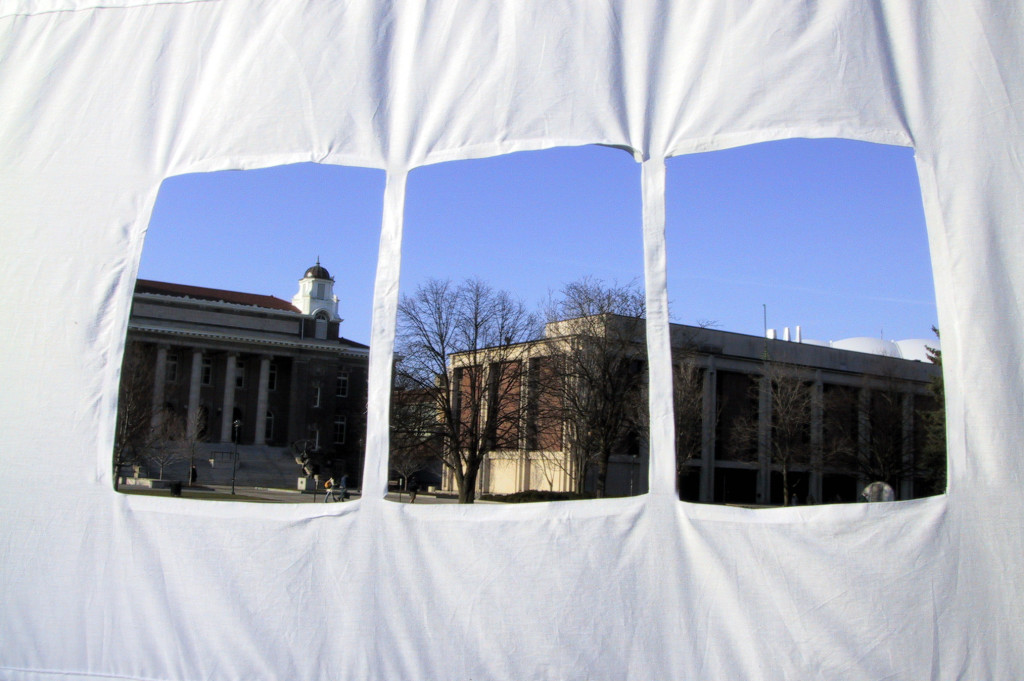StoryQuilt is an oral story visualization project. Participants sit at the StoryQuilter (the sewing machine) and tell it a story. Once the participant finishes her story, the StoryQuilter generates a personalized quilt (projected on a quilted screen) based on the participant’s story. The more the participant “gives” the StoryQuilter vocally, the more the StoryQuilter will put into the participant’s quilt.
Story quilts have often supported an oral history tradition within families. The quilts are regarded as narratives, as interpreted and imaged by the quilter. In this case the quilter is a piece of software, which only understands and interprets measurable components of the participant’s oral story. The software then uses that information to choose fabric colors, the level of detail of the quilt, the pattern to be used, and the scale to be used. If the participant tells the same overarching story in different ways, the resulting quilt will reflect these variations.
